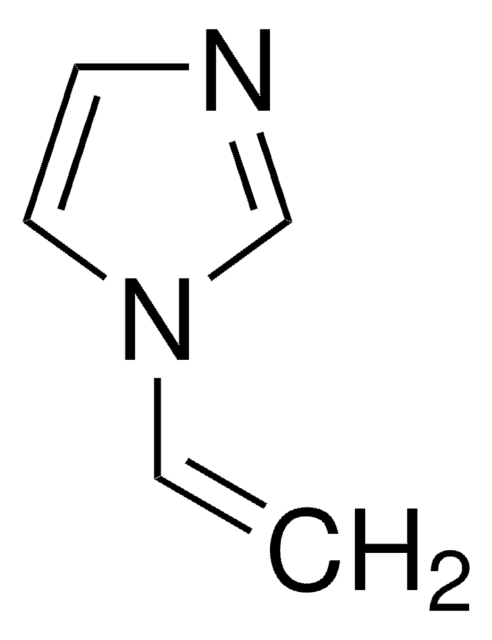Kluczowe dokumenty
96566
1-Propanol
analytical standard
Synonim(y):
Propyl alcohol
About This Item
Polecane produkty
klasa czystości
analytical standard
Poziom jakości
gęstość pary
2.1 (vs air)
ciśnienie pary
10 mmHg ( 147 °C)
14.9 mmHg ( 20 °C)
Próba
≥99.9% (GC)
temp. samozapłonu
700 °F
okres trwałości
limited shelf life, expiry date on the label
granice wybuchowości
13.7 %
metody
HPLC: suitable
gas chromatography (GC): suitable
współczynnik refrakcji
n20/D 1.384 (lit.)
n20/D 1.385
bp
97 °C (lit.)
mp
−127 °C (lit.)
gęstość
0.804 g/mL at 25 °C (lit.)
Zastosowanie
cleaning products
cosmetics
environmental
flavors and fragrances
food and beverages
personal care
Format
neat
ciąg SMILES
CCCO
InChI
1S/C3H8O/c1-2-3-4/h4H,2-3H2,1H3
Klucz InChI
BDERNNFJNOPAEC-UHFFFAOYSA-N
Szukasz podobnych produktów? Odwiedź Przewodnik dotyczący porównywania produktów
Opis ogólny
Zastosowanie
- Determination of acetaldehyde, methanol, and higher alcohols in different liquor samples by headspace gas chromatography (HS-GC) method coupled with flame ionization detector (FID)
- Identification of major odorants in chixiang aroma-type liquor using gas chromatography-olfactometry and further determination of the alcoholic odorants by GC-FID
- Analysis of 56 illegal alcohol samples to detect the presence of methanol and its derivatives gas chromatography-mass spectrometry (GC-MS)
- Detection and quantification of volatile organic compounds (VOCs) in 75 liquor samples by gas chromatography combined with mass spectrometry (GC-MS)
- Qualitative and quantitative analysis of 10 volatile organic compounds from different chemical classes in potable whey-based spirits during different stages of distillation
Inne uwagi
Hasło ostrzegawcze
Danger
Zwroty wskazujące rodzaj zagrożenia
Zwroty wskazujące środki ostrożności
Klasyfikacja zagrożeń
Eye Dam. 1 - Flam. Liq. 2 - STOT SE 3
Organy docelowe
Central nervous system
Kod klasy składowania
3 - Flammable liquids
Klasa zagrożenia wodnego (WGK)
WGK 1
Temperatura zapłonu (°F)
71.6 °F - closed cup
Temperatura zapłonu (°C)
22 °C - closed cup
Środki ochrony indywidualnej
Eyeshields, Faceshields, Gloves, type ABEK (EN14387) respirator filter
Wybierz jedną z najnowszych wersji:
Masz już ten produkt?
Dokumenty związane z niedawno zakupionymi produktami zostały zamieszczone w Bibliotece dokumentów.
Klienci oglądali również te produkty
Produkty
The Utility of Headspace Grade Solvents for the Analysis of Organic Volatile Impurities
Butyl methyl ether; Acetic acid; 2-Butanone; Ethyl acetate; Tetrahydrofuran; 1-Butanol; Isopropyl acetate; Heptane; Propyl acetate; 3-Methylbutanol; 4-Methyl-2-pentanone; Isobutyl acetate; Butyl acetate; Dimethyl sulfoxide; Anisole; Cumene
Protokoły
-Butanol; 2-Methyl-2-butanol; 2-Methyl-1-butanol; 3-Pentanol; 1-Butanol; 2-Methyl-1-propanol; 2-Pentanol, 98%; 3-Methyl-1-butanol; 1-Propanol
Separation of Acetone; Acetic acid; Propionic acid; Ethyl butyrate; Ethanol; Isoamyl acetate; Isobutyric acid; 3-Methyl-2-butanol; Methyl acetate; 1-Propanol; Acetal, ≥98%, FG; 2-Methyl-1-pentanol; Butyl acetate; Ethyl propionate; 3-Pentanol; 2-Pentanol, 98%; Ethyl isobutyrate; Isobutyl acetate; Acetaldehyde; Furfural; Butyric acid; Methanol; Ethyl acetate
GC Analysis of Class 3 Residual Solvents on SUPELCOWAX® 10
Nasz zespół naukowców ma doświadczenie we wszystkich obszarach badań, w tym w naukach przyrodniczych, materiałoznawstwie, syntezie chemicznej, chromatografii, analityce i wielu innych dziedzinach.
Skontaktuj się z zespołem ds. pomocy technicznej









